Alice Reptile Centre

Beez Neez now Chy Whella
Big Bear and Pepe Millard
Fri 1 Apr 2016 22:37
|
Alice Springs Reptile
Centre
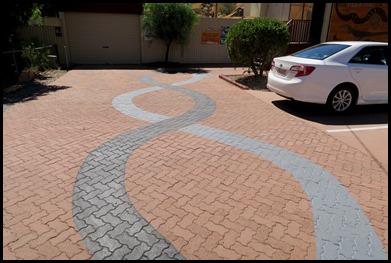 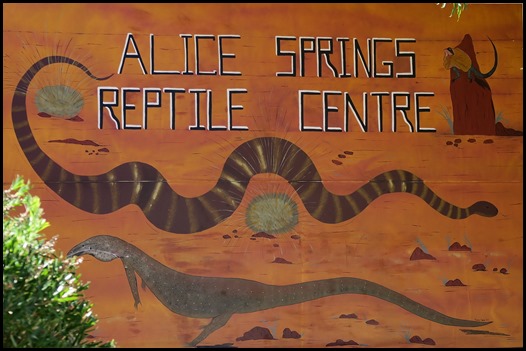 You could have knocked me down with a
feather when Bear said, after we’ve been to the
Botanical Gardens I fancy the Reptile Centre. So pleased I was
sitting down, “do you see yourself hugging a snake”, Ooooooooo, not promising. Well, at least that wasn’t
an affirmative three points for a refusal........ So, after we had finished in
the garden we walked the short distance to Alice Springs Reptile
Centre.
Rex
Neindorf, the owner of the Reptile Centre, fulfilled a life-long dream when in
mid 1999 he moved into the premises. After six months of hard work with the aid
of many friends and local builders, the property was transformed into The
Reptile Centre and was opened to the public in January 2000. May 2002 saw the next major achievement with the arrival of
‘Terry’ the saltwater crocodile. The Reptile Centre
displays over a hundred reptiles of sixty different species, providing a
comprehensive overview of Northern Territory reptile fauna. In 2010 The Gecko Cave was constructed adding some
thirteen species of gecko’s from a range of habitats throughout the Northern
Territory. And, of course a hands-on session with a python and a couple of other
chaps.
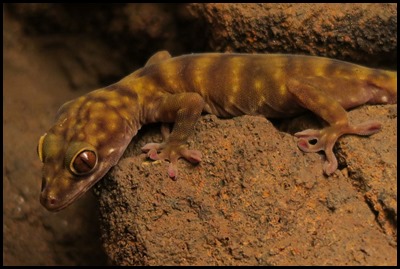   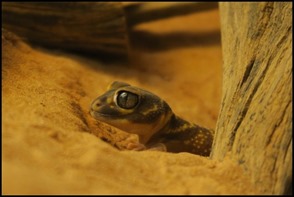 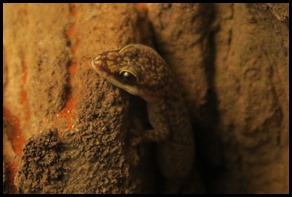 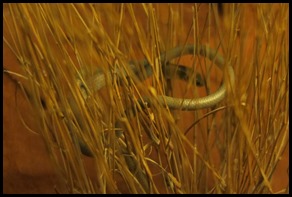 After the intense heat of the day, we
began in the Gecko Cave. The first chap was a real sweetie –
in fact they all were, except for the last one who was a bit of a
surprise – a legless lizard, although it looks like a
snake, in fact one of thirty eight species of legless lizard found in Australia.
Unlike snakes, these chaps can hear and their tongue is fleshy not forked. The
only similarity is their colouring.
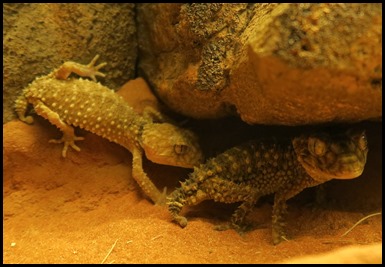  The next pair carry the fabulous name
of the Centralian Knob-tail gecko, also
known simply as Rough Knob-tailed geckos, they are one of the most bizarre
groups of lizards. No purpose has ever been acknowledged as to the appearance of
these knobs, however, they have been known to wiggle their tails during hunting,
almost as if they are excited for their next meal. Now, the penny drops, Bear is
a Rough-Knob, Oh, I say, at least you think they have a
lot of character and are in their own way handsome. I don’t remember
the word handsome.......... I’ve told you a hundred billion times not to
exaggerate....... Back to the chaps, native to central Australia, females can
reach thirteen centimetres in length – making them the largest knob-tail gecko
species. Due to their nocturnal nature, these geckos are rarely seen during the
day and hide away under rock ledges and in grass. They largely feed on
arthropods, but have also been known to eat smaller species of geckos as well.
Therein another similarity – not fussy eaters. I can’t
help loving all food. No, clearly another reason why you’re called
Big Bear, OK, skinny
bint........
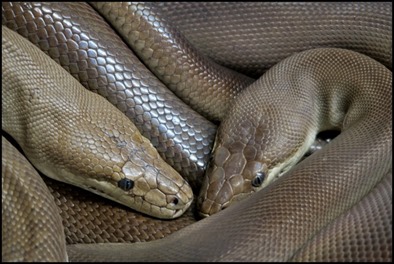
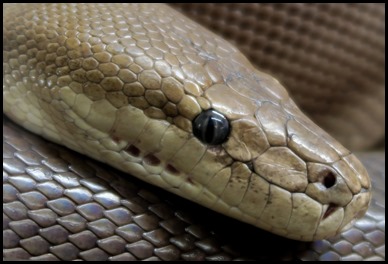 Bear walked
past these lovelies quite swiftly. Olive
Pythons, like most pythons these are mainly nocturnal, feeding on
mammals, birds and reptiles. Found in the northern regions of Australia, these
non-venomous snakes can grow to over five metres in length and weigh
approximately thirty kilograms. Colours range from light fawn
to very dark olive-brown. All pythons (except the Woma and Black-headed) have
heat-sensing pits on their cheeks, which help them to detect the warmth from
their prey. They can eat a rock wallaby and not need to eat for the next three
months.........
 Hissing Sid. Most
reptiles raise their body temperature by basking in the sun. The distinctive
black colouring on this Black-Headed Python was
thought to be a further refinement in temperature control. From the comparative
safety of a rock crevice, cave, hollow log or burrow, this snake can raise its
body temperature by exposing only the head to sunlight. The brain heats quickly
and the warm blood is circulated throughout the body. Currently, the black head
is believed to help with stealth; when it attacks prey they can remain
undetected while approaching. Their diet consists mainly of reptiles,
including venomous snakes, but they also eat mammals and birds. This preference
for reptiles is cited as a likely reason for the narrow head and the absence of
heat sensory pits. They have a threatening disposition when disturbed, displayed
by elevating its head and hissing. If I was a snake I would quite like to be one
of these. Yes, that’s about it – hot head,
sneaking up on people and plenty of hissing...... What was that ???
Nothing dear,
nothing.........
 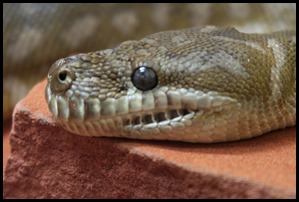 Carpet
pythons are predominantly an arboreal nocturnal species, though sometimes
they can be found basking and foraging by day. They live in the rocky ranges and
outcrops of arid southern Northern Territory where they shelter in hollow trunks
and tree limbs, especially those adjacent to water, rock crevices and caves.
Their diets comprise of mainly mammals and birds but reptiles and amphibians can
also be taken. The row of seven pits that trace the line of the jaw are heat
sensitive used to detect ‘warm blooded’ prey in the dark. These heat receptors
are sensitive to all temperatures above the pythons own body temperature. In
some snakes they can register a change as little as one thousandth of a degree
Celsius. This chap can be blindfolded and still catch a flying bat at a distance
of fifty centimetres. Impressive skill.
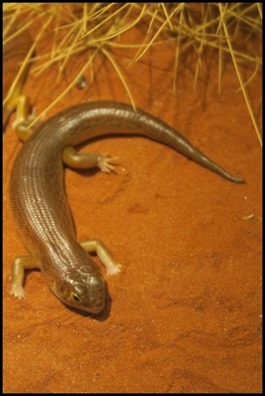  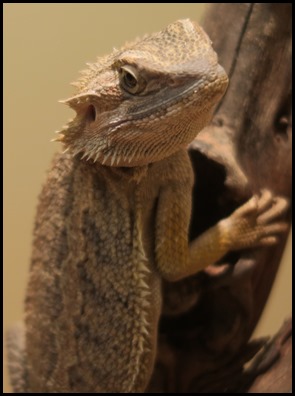 A look at a few more chaps and then we
went outside.
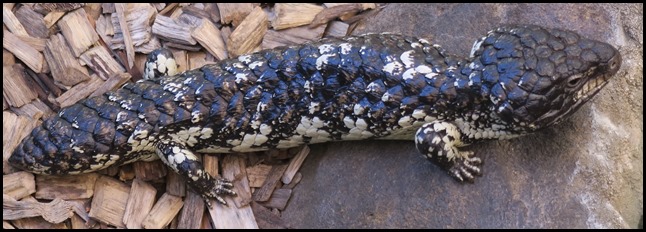 Our first outdoor chap was this curious looking Shingleback – looks like a
push-me-pull-you.
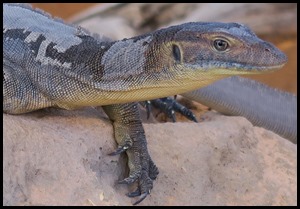 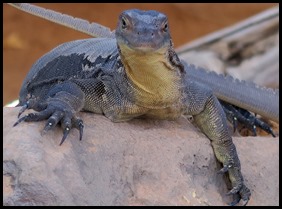 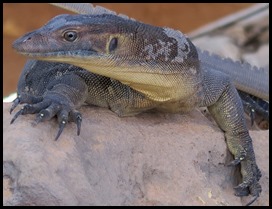 Merten’s Water Monitor, was just too
quick to get him with his tongue out.
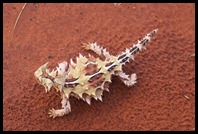 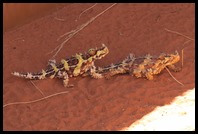 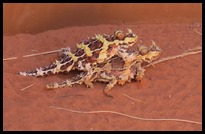 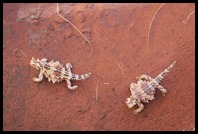 We had a good laugh when this thorny
devil stuck his head up, ran up behind a
potential love match, tried it on but all didn’t end well. Cold shoulder and no
cigar.
 I put this picture on our Facebook page with: Thorny devils stand in water and drink by capillary action, The water travels up their legs along the back and into the mouth. The lump on the back of their neck is a false head, if attacked they tuck their head between their legs - the false one can be ripped off, heal but not regrow, helping these little chaps live to twenty years old. They move in a stop-start rocking to look like a leaf blowing in the wind. Bear looked like a man with with ‘a light come on’, straight home to put his feet in a bowl of rum........I’m going to give this a serious test......... Mmmm.
 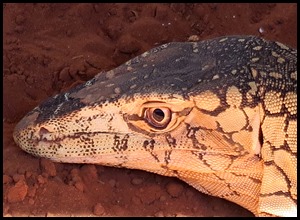 Cute, well
compared to the next fellow, yes. We spent some time
with Terry and then did another circuit and gallery of the Centre until our
three thirty hands-on.
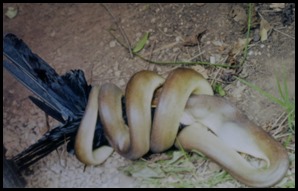 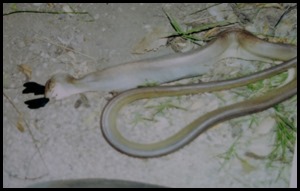 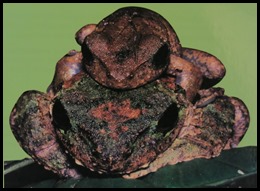 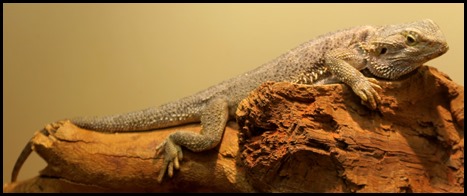  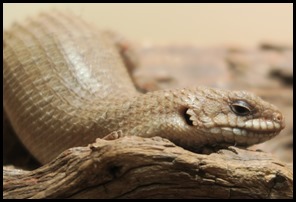 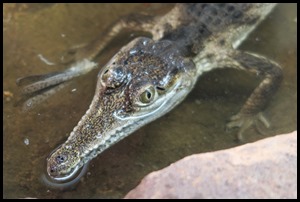 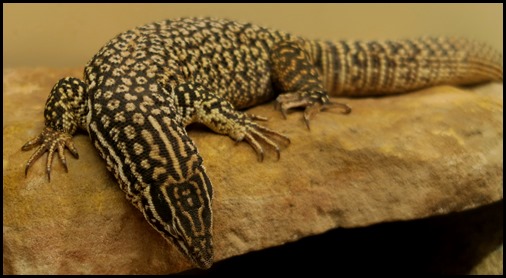 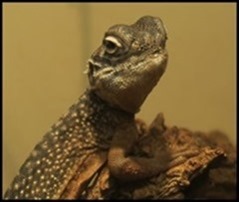 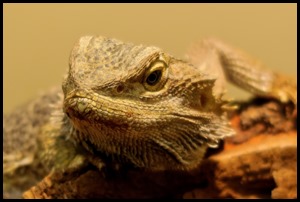 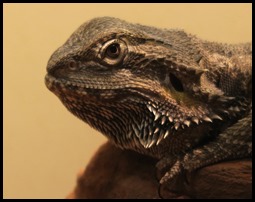 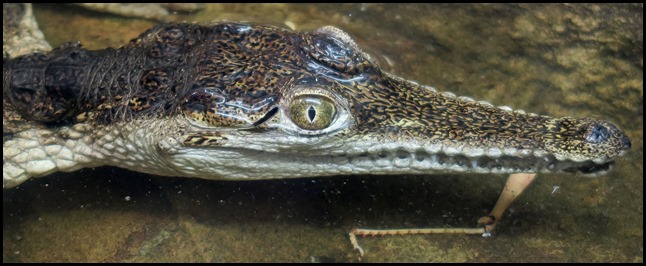 ALL IN ALL A REALLY
INTERESTING PLACE TO VISIT
WELL LAID-OUT, A GREAT
FIND
|